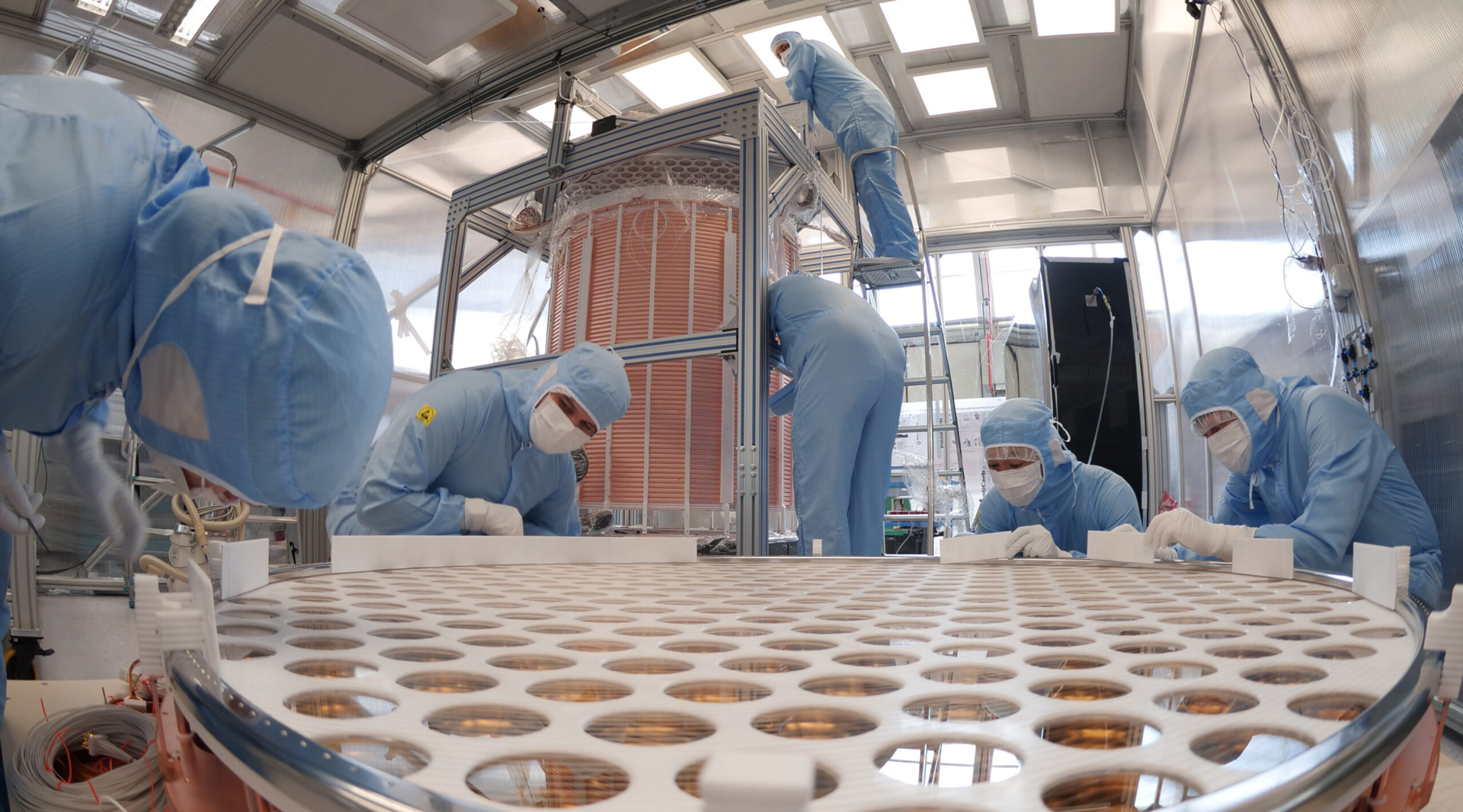
The XENONnT experiment was designed to look for elusive dark matter particles.
On 22 July, during the International Conference on Identification of Dark Matter in Wien, XENONnT presented its first scientific results, based on data collected during the first activity cycle of over 97.1 days, from 6 July to 10 November 2021.
From the analysis of new data, the latest detector of the XENON program, constructed and subsequently commissioned between spring 2020 and spring 2021 at INFN Gran Sasso National Laboratories despite the challenging pandemic situation, shows a very high sensitivity for researching very rare phenomena due to its unprecedented ‘purity’.
The XENON presented results show one-fifth of the “electronic recoil background” of its predecessor, XENON1T. Two years ago, the XENON collaboration announced the observation of an excess of electronic recoil events in the XENON1T experiment. The result triggered a lot of interest and many publications since this could be interpreted as a signal of new physics beyond known phenomena. The absence of an excess in the new data indicates that the origin of the XENON1T signal was trace amounts of tritium in the liquid xenon, one of the hypotheses considered at the time. In consequence, this leads now to very strong limits on new physics scenarios originally invoked to explain an excess.
The INFN groups have been part of the XENON project since 2009 and they are coordinated by Marco Selvi of the INFN Bologna Division, and led by Gabriella Sartorelli (University and INFN Bologna), Walter Fulgione (INFN-LNGS), Giancarlo Trinchero (INAF and INFN Turin), Michele Iacovacci (University and INFN Naples), Alfredo Davide Ferella (University of L'Aquila) and Guido Zavattini (University and INFN Ferrara).






